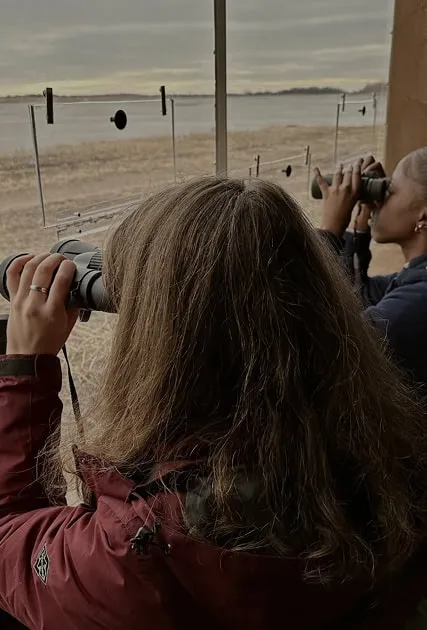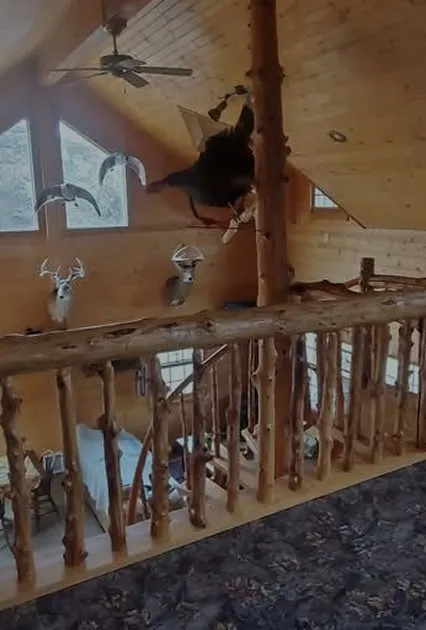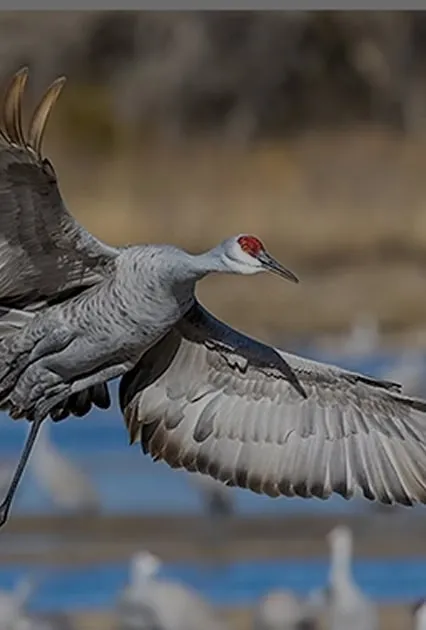Explore the Sandhill Crane Migration
Each spring, 1,250,000 sandhill cranes converge on the Platte River in central Nebraska as they migrate north to nest.
.webp)
Home of the Sandhill Crane Migration
Each spring, more than 1,000,000 sandhill cranes converge on the Platte River in central Nebraska as they migrate north to their nesting grounds. This one-of-a-kind experience draws visitors – including avid birders, scientists, photographers, and casual tourists – from across the country and across the world.
Visit in March to see the most cranes.
The peak of the gathering occurs during the second half of the month. Towards the end of March, you might also catch a glimpse of endangered Whooping Cranes or take the opportunity to venture into the Nebraska Sandhills to watch the colorful mating rituals of the Prairie Chickens.




Six weeks in the spring
Sandhill cranes use the same part of the river to roost on year after year during their mid-migration stop in central Nebraska.
The first cranes usually arrive mid-Febraury, although the peak of the gathering tends to occur during the middle of March. Towards the end of March, you might also catch a glimpse of endangered whooping cranes or take the opportunity to venture into the Nebraska Sandhills to watch the colorful mating rituals of the prairie chickens.
This one-of-a-kind experience draws visitors – including avid birders, scientists, photographers, and casual tourists – from across the country and across the world. Plan to see the cranes today!
How to see the Sandhill Cranes
The Crane Trust Nature & Visitor Center is your headquarters for the spring migration of the sandhill cranes. Their guided viewing blind tours are designed to get you as close to the cranes as possible without disturbing them. VIP experiences are also available with lodging provided by the Crane Trust in newly constructed cabins. A handicapped-accessible footbridge tour overlooks a smaller channel of the Platte River on the trust property.
At dawn, after roosting on the Platte River overnight, flocks of cranes head to nearby cornfields. During the day, cranes feed in the cornfields and marshes along the river. At dusk, after feeding, cranes return to the river to roost for the night.
%20(1).webp)
Guided tours are not necessary to see the sandhill cranes. A newly refurbished public viewing deck is located on Alda Road along the Platte River, and parking areas along Platte River Road offer opportunities to view the cranes in cornfields as they feed midday. The Crane Trust performs an aerial count of the birds during their migration, and report on number and location of the cranes on their blog and in their newsletter, the Prairie Pulse.For a more customizable and longer crane-viewing experience, the Crane Cabin Retreat is available on one of the best stretches of river for crane viewing in the central flyway. In addition to the cabin, there is a photo blind in the river and guided tours on the rivers edge — available to all groups, not just cabin guests.
%20(1).webp)
Crane-watching etiquette
- Use designated, safe viewing sites to watch the birds.
- Do not stop on roadways, in driveways, or on any private farm road. Stay in your vehicle and use it as a viewing blind. Approaching the birds will only disrupt their feeding and cause them to fly away.
- Respect private property. Most land in the Platte River Valley is private.
What to pack
- Binoculars, spotting scope
- Camera
- Birding guide
- Warm, layered clothing
- Don’t forget to invite friends and reserve a hotel room!
Proud member of the Nebraska Flyway Partnership.
simply gRAND for all
Stay informed, stay inspired, and stay ahead with Grand Island Tourism.
View our Visitor Guide
Our visitor guide is the best way to navigate our simply GRAND city. View now.

